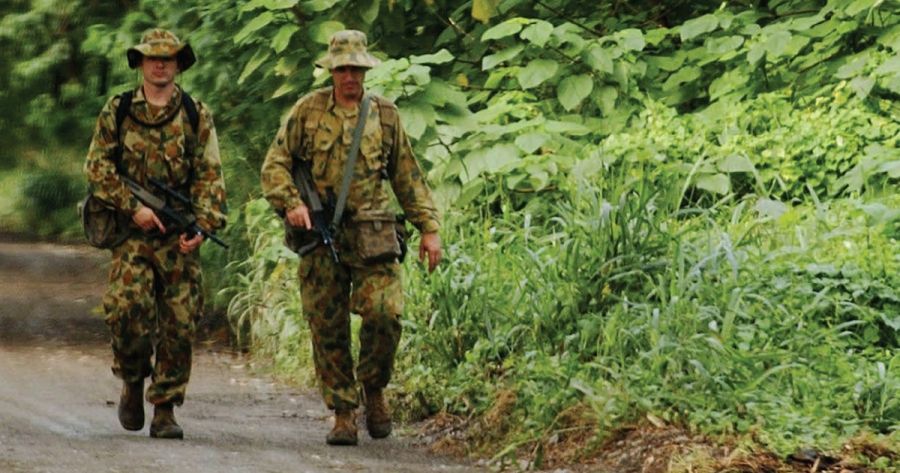
- Free Article: No
- Contents Category: International Studies
- Review Article: Yes
- Article Title: An unlikely intervention
- Article Subtitle: The story of RAMSI
- Online Only: No
- Custom Highlight Text:
It would be interesting to know how many Australians have heard of the Regional Assistance Mission to Solomon Islands (RAMSI). My guess is that not many have, and then only vaguely. It is interesting, then, that Melbourne University Publishing has published a book about the mission. Written by political scientist Michael Wesley, Helpem Fren is a detailed and meticulously researched account of the intervention, from an Australian perspective.
- Article Hero Image (920px wide):
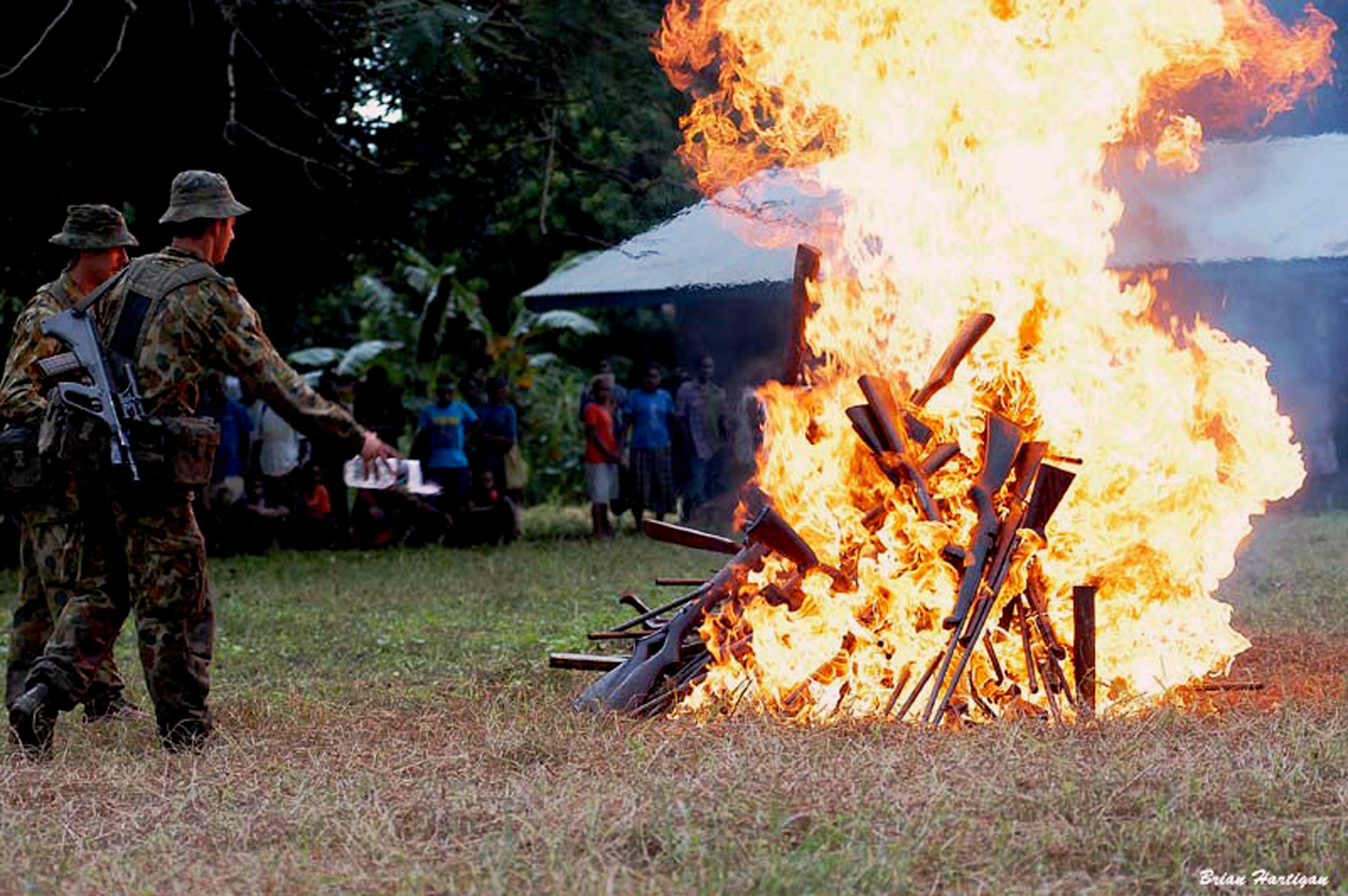
- Article Hero Image Caption: Australian soldiers burning guns during the RAMSI deployment in October 2003 (photograph by Brian Hartigan RAMSI 1/Department of Foreign Affairs and Trade via Wikimedia Commons)
- Featured Image (400px * 250px):
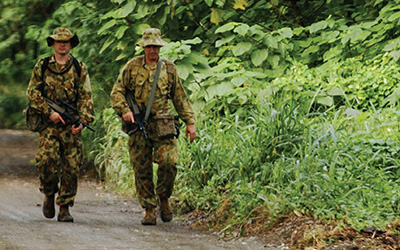
- Alt Tag (Featured Image): Ceridwen Spark reviews 'Helpem Fren' by Michael Wesley
- Book 1 Title: Helpem Fren
- Book 1 Subtitle: Australia and the Regional Assistance Mission to the Solomon Islands
- Book 1 Biblio: Melbourne University Publishing, $40 pb, 310 pp
- Book 1 Cover Small (400 x 600):
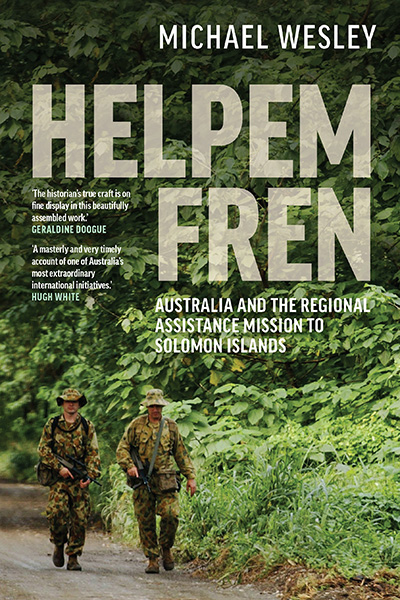
- Book 1 Cover (800 x 1200):
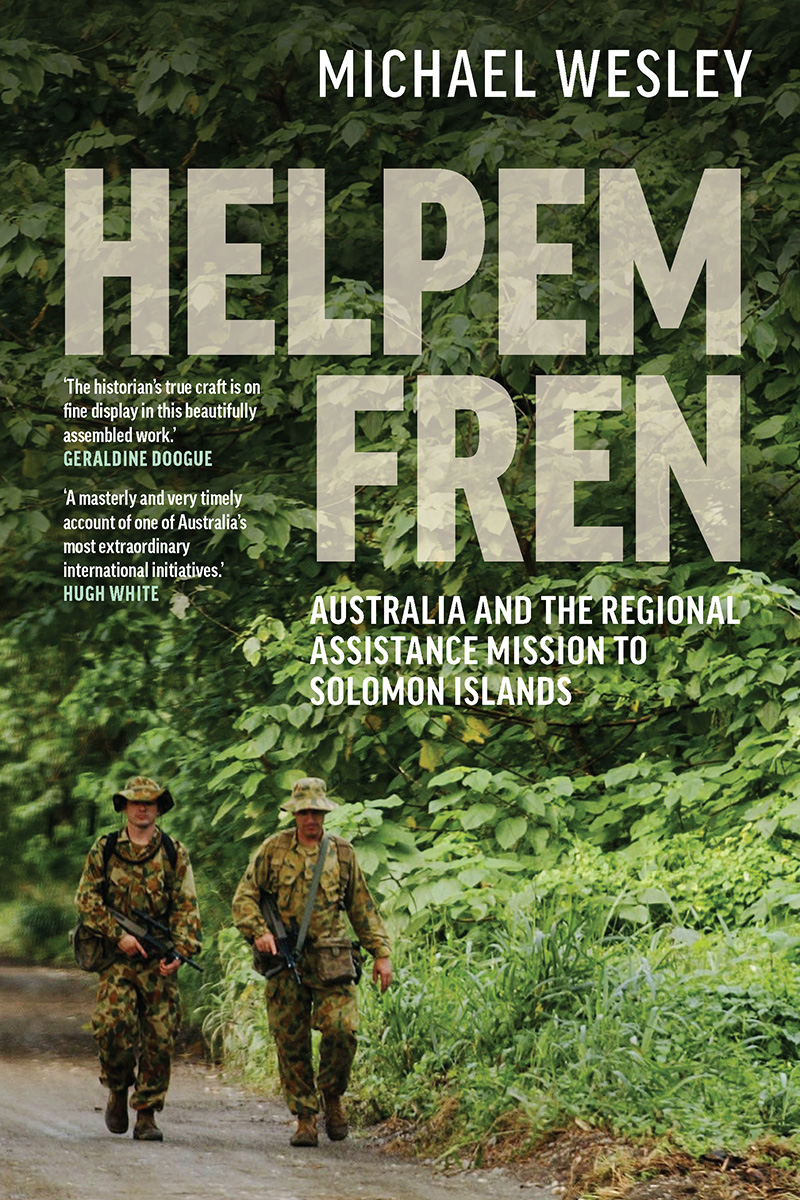
Australia has not been popular in the region of late. Neighbourly relations hit an all-time low under the Morrison government, which demonstrated an imperial approach to climate change, including at various regional forums. Although the situation has begun to thaw somewhat under Anthony Albanese, with the assistance from Penny Wong as the Minister for Foreign Affairs, further reparatory work is needed. Given that Australia is as motivated by fears of Chinese influence in the region as by a desire to be more respectful towards our neighbours, it is helpful that Wesley posseses a sound knowledge of Australia’s relationships with Asia, a topic on which he has published two books.
In Helpem Fren, Wesley focuses on Australia’s engagement with the Solomon Islands through RAMSI. He simultaneously assesses the intervention in the region from a contemporary Pacific perspective.
So what was RAMSI? Wesley answers this question with rigour, insight, and a keen sense of drama. As he notes, the sporadic violence that had flared between the Guale and Malaitan peoples since colonial times reached new levels in the Solomon Islands in 1998.
This violence came from inside, springing up in villages and fields, not committed by strangers but by neighbours, acquaintances, sometimes even family members … Almost overnight, the local boys were carrying guns or traditional weapons … By the beginning of 1999, the campaign had become systematic.
Wesley argues that this brutality ‘had its roots deep in that society and the political economy of colonialism and the post-colonial state’. He further suggests that this made the communal violence ‘significantly different from the other instances with which it was grouped’, including the state failure in Yugoslavia, for example. Echoing violence much closer to home in what was then the Papua New Guinean territory of Bougainville, ‘the tensions’ as they came to be known, were always going to be difficult to curb with help from Australia, which has its own history of colonialism in the Pacific.
Carefully laying out the history, politics, and implementation of the intervention, Wesley shows that in its stamping out of ‘a cycle of violence, criminality and state dysfunction’, RAMSI was a success. But, as one of the many participants and observers who analysed the mission in one of myriad reports put it: ‘Although RAMSI has succeeded in reducing and suppressing the manifestation of conflict – violence – it has not, and perhaps could not have succeeded in removing the causes of conflict.’ Though well intentioned and generally well managed, the thirteen-year partnership cost Australia more than $2.6 billion and, as Wesley concludes, ‘bound Australia and Solomon Islands together in a complex, intimate and unpredictable relationship’.
Helpem Fren has many strengths. In his first work of history, Wesley displays a flair for this mode. In particular, his depiction of some of the key players in the story renders evocative what could be a dry read. We learn, for example, about the brutal but religiously inclined Harold Keke, leader of the Guadalcanal Liberation Front. Responsible for the murders of priests along with many others, Keke admitted as much when he negotiated with RAMSI representatives in a church – he ‘could not lie … in a house of God’. Wesley’s intimate portrayals of the two Solomon Islands prime ministers who played different but crucial roles across the thirteen-year time span provide a reminder of the role personality plays in the exercise of power.
The book also offers a fascinating window into the complex interplay between cooperation and irritation at stake in regional relationships. RAMSI was supported by the Pacific Islands Forum, and throughout its activities Forum leaders played a key role in ensuring the mission was seen as an act of regional solidarity. This did not prevent rumblings from some leaders however, including Michael Somare, then prime minister of Papua New Guinea, who was at one point banned from entering Australia because of his perceived involvement in protecting a Solomon Islands man wanted by the Australian authorities.
Despite its many strengths, the book has limitations. Wesley could have done more to represent the perspectives of women in the conflict and its resolution. The topic of gender is raised briefly three times; even then, women appear as the implied focus of incoming gender equity programs rather than as people impacted by and involved in the story. The one exception to this is Wesley’s brief and rather essentialising mention of the role of women in improving the reputation of the Solomon Islands Police Force. Given stabilising the police force was a crucial prong of RAMSI’s intervention, this is a missed opportunity. However much we may perceive men to be at the forefront of this masculine mission, such an approach is outdated.
Perhaps inevitably, considering that the book needed to cover the odious concept of ‘capacity building’, there are also a few
sections in the chapters ‘Viability’ and ‘Governance’ which are rather hard going. Wesley details RAMSI’s attempts to strengthen the bureaucracy in language reminiscent of the technical reports that characterise the contemporary parlance of development speak.
Luckily, this flat tone is neither prolonged nor characteristic. Helpem Fren, the first comprehensive history of Australia’s role in RAMSI is an accomplished, well written and mostly fascinating account of this unlikely intervention.


Comments powered by CComment